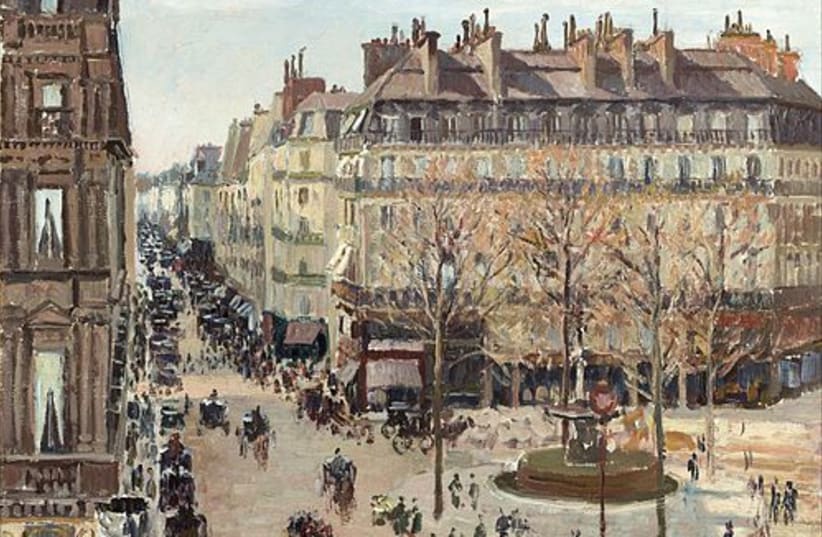In a case resembling that of the "Woman in Gold", the US Supreme Court is set to rule on the question of who owns the painting "Rue Saint-Honoré in the Afternoon, Effect of Rain" (1897) by Danish-French Impressionist Camille Pissarro following a hearing from last Tuesday.
The painting's original owners, the German-Jewish Cassirer family, have been fighting the Spanish art museum that displays it to give the painting back for nearly 17 years. When the noose of Nazi Germany continued to tighten around the Cassirer family's throats, Lilly Neubacher Cassirer chose to flee the country in 1939. A Nazi officer made it clear that the possibility of getting exit visas for the family was entirely contingent on whether they relinquished their beloved Pissarro painting. The officer "bought" the painting off of the family for the price of $360, which he then deposited in a blocked account. The painting is valued at $30 million today.
After the Second World War, Lilly Neubacher Cassirer spent years looking for the painting in vain. She accepted $13,000 in reparation payments from the German government when she concluded that the painting must have been lost or destroyed. However, she never gave up her right to search for and claim the painting if it was found, according to The Guardian. The painting went from owner to owner before being purchased by Baron Hans Heinrich Thyssen-Bornemisza of Lugano, Switzerland, in 1976. The painting was one of 775 works the baron sold to Spain for more than $300 million in the early nineties. Lilly’s grandson Claude discovered the painting at the Thyssen-Bornemisza Museum in Madrid, Spain, in 2000. When he requested that the museum return it to him in California, they refused to do so. After the Spanish court denied his request for the painting's return, he sued in his home state of California, thereby setting off the legal battle that continues to this day. Claude's son David continued the fight after Claude passed away in 2010. “This has been three generations of the Cassirer family trying to take back what is theirs,” stated the family’s attorney, Stephen Zack, of the US law firm Boies Schiller Flexner. Although no one denies the fact that the painting came to the museum as stolen property, there has not been a conclusive decision as to whether the present-day owner of the painting can be determined by Spanish or Californian law. Spanish law identifies ownership as six years of uninterrupted possession. Moreover, the Spanish court applied a local law where the burden is higher on victims to prove that the foundation should have known the painting had been stolen, according to CNN. Given that the painting traveled across the world and from owner to owner, this is a difficult claim to prove. However, under California law, someone cannot lay a viable claim to a stolen piece of property, according to Zack.
The Jewish Museum's website of the recently-closed "Afterlives: Recovering the Lost Stories of Looted Art" exhibit which ran from August 2021 until January 2022, notes that an estimated one million stolen artworks were recovered after the war. Approximately 600,000 of these artworks are paintings, of which 100,000 are still missing, according to Stuart Eizenstat, Special Representative of the President and Secretary of State on Holocaust-Era Issues during the Clinton Administration. The Guardian reports that the main governing bodies of the Spanish Jewish community have submitted briefs to the court in support of the Cassirer family, describing the years-long wrangle as exacerbating the deep wounds left by the Holocaust. “Further harm and offense [are] caused to the Jewish population in Spain when a government-funded institution publicly displays and claims rightful ownership over an artistic work looted by the Nazis during the Holocaust,” the Jewish Community of Madrid and the Federation of Jewish Communities in Spain said in their submission.After an hour of arguments in court, Justice Stephen Breyer reportedly asked the question: “Can everyone agree that this is a beautiful painting?” as an attempt to break some of the tension yesterday.
The SCOTUS ruling is set to come out in four to six weeks.

